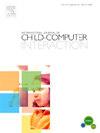社会想象作为共同设计环境可持续性的镜头
Q1 Social Sciences
International Journal of Child-Computer Interaction
Pub Date : 2025-08-30
DOI:10.1016/j.ijcci.2025.100759
引用次数: 0
摘要
社会想象是一种设想人们如何维持社会的方式,以及理解社会中什么是有价值的。在这个项目中,我们与孩子们一起使用协同设计,为未来的环境可持续解决方案,这是一种儿童-计算机交互的常用方法。我们将社会想象的镜头应用到五个来自世界各地不同地理区域的共同设计案例研究中,以描述和分析设计实践以及设计工件的变化,并检查儿童如何表现出对亲社会世界的共同理解。本文的主要贡献是利用社会想象来解释和组织围绕环境可持续性的共同设计。本文章由计算机程序翻译,如有差异,请以英文原文为准。
Social imaginaries as a lens on co-designing environmental sustainability
Social imaginaries are a way of envisioning how people maintain society, and of understanding what is valued within that society. In this project, we worked with children on environmentally sustainable solutions for the future using co-design, a common methodology in child–computer interaction. We apply a social imaginary lens to five co-design case studies, from different geographic regions around the world, to describe and analyze variations in design practices as well as in design artifacts, and examine the ways in which children demonstrated a shared understanding of a pro-social world. The primary contribution of this paper is an illustration of the use of social imaginaries for interpreting and organizing co-design around environmental sustainability.
求助全文
通过发布文献求助,成功后即可免费获取论文全文。
去求助
来源期刊

International Journal of Child-Computer Interaction
Social Sciences-Education
CiteScore
7.20
自引率
0.00%
发文量
73
 求助内容:
求助内容: 应助结果提醒方式:
应助结果提醒方式:


